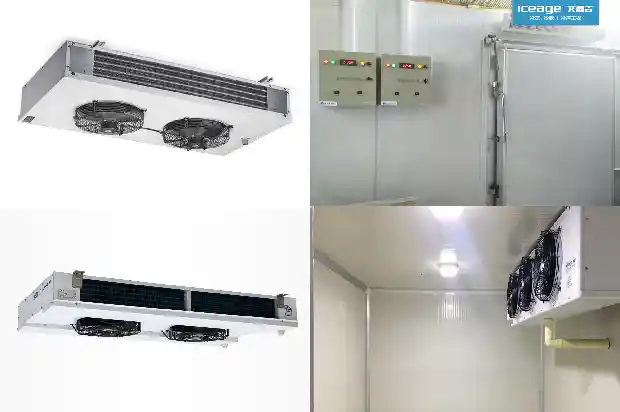Startup, Shutdown and Accident Handling of Jet Water Pump
2025-01-14
The function of the injection water pump is to supply feed water with a certain pressure to the water - jet air - ejector, enabling it to establish and maintain the vacuum of the condenser.
I. Startup and Precautions of the Injection Water Pump
1. Pre - startup Checks
(1) Check that the pump body is intact. (For equipment after maintenance, check whether the grounding of the motor housing is good and test the insulation of the motor to be qualified.)
(2) Check whether the positions of the valves of the pump and the system are normal.
(3) The coupling should be able to be turned flexibly, and the oil quality and oil level of the bearing should be normal.
(4) Check that the outlet valve and inlet valve of the pump are open, and an appropriate amount of cooling water is flowing out.
(2) Check whether the positions of the valves of the pump and the system are normal.
(3) The coupling should be able to be turned flexibly, and the oil quality and oil level of the bearing should be normal.
(4) Check that the outlet valve and inlet valve of the pump are open, and an appropriate amount of cooling water is flowing out.
2. Startup
After the pre - startup checks are normal, close the operation switch of one injection water pump. Pay attention to the following:
(1) The current indication on the ammeter should reach the maximum value instantaneously and then return to the rated value within 5 seconds. If so, the injection water pump starts normally; otherwise, stop the pump immediately and find out the reason.
(2) After the water pump starts, the outlet pressure, current, bearing sound, vibration, oil quality, oil level, and temperature of the injection water pump should be normal. The packing should have water droplets dripping and should not overheat.
(3) After the checks are normal, move the interlock key of the running pump to the working position and the interlock key of the standby pump to the engaged position.
(1) The current indication on the ammeter should reach the maximum value instantaneously and then return to the rated value within 5 seconds. If so, the injection water pump starts normally; otherwise, stop the pump immediately and find out the reason.
(2) After the water pump starts, the outlet pressure, current, bearing sound, vibration, oil quality, oil level, and temperature of the injection water pump should be normal. The packing should have water droplets dripping and should not overheat.

(3) After the checks are normal, move the interlock key of the running pump to the working position and the interlock key of the standby pump to the engaged position.
II. Shutdown and Precautions of the Injection Water Pump
1. Checks
(1) Check that the outlet valve and inlet valve of the standby pump are open, and cooling water is flowing out from the packing.
(2) The oil quality of the bearing should be qualified, and the oil level should be normal.
(3) Disengage the interlock switch of the running pump and start the standby pump.
(2) The oil quality of the bearing should be qualified, and the oil level should be normal.
(3) Disengage the interlock switch of the running pump and start the standby pump.
2. Precautions after Startup
(1) After checking that the standby pump starts normally, stop the pump. Move the interlock key of the running pump to the working position and the interlock key of the standby pump to the engaged position.
(2) If the pump is found to rotate in reverse after shutdown, close the outlet valve or inlet valve immediately.
(3) If the start switch of the standby pump cannot be closed, report to the superior. After the problem is resolved, stop the standby pump.

(2) If the pump is found to rotate in reverse after shutdown, close the outlet valve or inlet valve immediately.
(3) If the start switch of the standby pump cannot be closed, report to the superior. After the problem is resolved, stop the standby pump.
III. Accident Handling of the Injection Water Pump
1. When the following faults occur in the running pump, stop the faulty pump first and then start the standby pump:
(1) The bearing temperature rises above 90°C or smokes.
(2) The motor smokes or catches fire.
(3) There is a clear metal friction sound inside the water pump or the motor.
(4) The impeller of the water pump is damaged.
(2) The motor smokes or catches fire.
(3) There is a clear metal friction sound inside the water pump or the motor.
(4) The impeller of the water pump is damaged.
2. When the following faults occur in the running pump, start the standby pump first and then stop the faulty pump:
(1) The motor temperature rises, but does not reach 80°C or the temperature rise does not reach 60°C.
(2) The bearing temperatures of the water pump and the motor rise, but do not reach 90°C.
(3) The check valve or the inlet and outlet valves of the water pump are damaged.
(4) The vibration of the water pump and the motor exceeds 0.06mm.
(2) The bearing temperatures of the water pump and the motor rise, but do not reach 90°C.
(3) The check valve or the inlet and outlet valves of the water pump are damaged.
(4) The vibration of the water pump and the motor exceeds 0.06mm.
3. Reasons for the injection water pump losing pressure or not pumping water:
(1) The water level in the injection water tank is low or there is no water.
(2) The water temperature in the injection water tank is high or the inlet pipe of the water pump is blocked.
(3) The rotation direction of the motor is incorrect.
(4) The inlet gate valve of the water pump falls off or the impeller is damaged.
(2) The water temperature in the injection water tank is high or the inlet pipe of the water pump is blocked.
(3) The rotation direction of the motor is incorrect.
(4) The inlet gate valve of the water pump falls off or the impeller is damaged.
Handling methods:
(1) Add industrial water to the injection water tank to reach the normal water level. (When industrial water cannot be added, circulating water can be added.)
(2) Add industrial water to the injection water tank for water replacement. If the inlet pipe is severely blocked, report to the shift supervisor and wait for shutdown for treatment.
(3) Confirm that the rotation direction of the motor is incorrect and contact the electrical department for handling.
(4) Confirm that the inlet gate valve of the water pump has fallen off or the impeller is damaged, and stop the pump for treatment.
(1) Add industrial water to the injection water tank to reach the normal water level. (When industrial water cannot be added, circulating water can be added.)
(2) Add industrial water to the injection water tank for water replacement. If the inlet pipe is severely blocked, report to the shift supervisor and wait for shutdown for treatment.
(3) Confirm that the rotation direction of the motor is incorrect and contact the electrical department for handling.
(4) Confirm that the inlet gate valve of the water pump has fallen off or the impeller is damaged, and stop the pump for treatment.
Related Articles
- Startup, Shutdown Procedures and Accident Handling of Various Pumps
- How to Solve the Problem of Frequent Shutdown and Startup of Cold Storage Compressors?
- Startup and Shutdown Operations of Screw Chiller
- Accident Handling and Precautions for Circulating Water Pumps
- Introduction to Inspection and Handling Methods for Refrigerant Leak in Cold Storage
- Refrigeration System Failures: Handling System Blockages and Water Infiltration
- Screw-Type Water Cooled Unit Normal Operation Indicators and Failure Handling
- What is the Air - conditioner Jet Enthalpy - increasing Technology?
